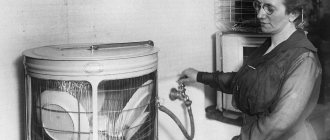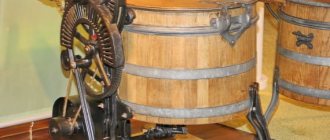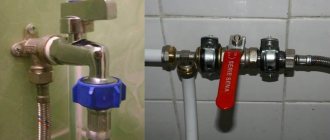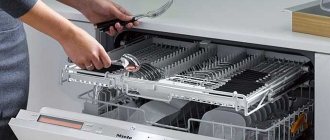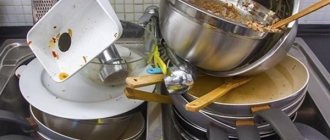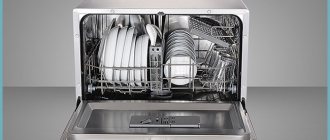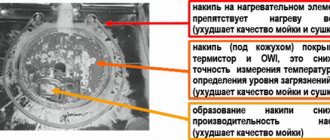Josephine Cochrane was the first to invent and build a dishwasher in 1886.
Perhaps the ability to design was passed on to Josephine from her father and great-grandfather. Her father inspected cloth factories and sawmills, and her great-grandfather John Fitch created the first steamboat in America, which opened a crossing between Philadelphia and Trenton in 1790.
John Fitch and his ship
At 19, Josephine married 27-year-old William. The year before, after unsuccessful attempts to get rich during the California Gold Rush, he became a politician in the Democratic Party. The Cochranes often held receptions at their home, to which William's party comrades were invited. They set the table with relic Chinese china, believed to be from the 1600s. One such day, the servants broke some of the dishes while washing dishes. Josephine forbade them to touch the porcelain and began to wash it herself.
“If no one is going to invent the dishwasher, I’ll do it myself!” "If nobody else is going to invent a dishwashing machine, I'll do it myself"
Josephine began to think about the concept of the machine. The first version was mechanical, with manual drive.
The dishes were placed in a rack, and water under pressure cleaned them
William abused alcohol and died at age 52, leaving his wife $1,535.59 in debt. Josephine had to work on the car not only for her own convenience, but also to earn money.
Failed Attempts
Joel Goughton is an American who received patent No. 7365 in 1850, which recorded the authorship of “an improvement for a dishwashing machine.” Before Goughton, various people made unsuccessful attempts, their names have been lost.
The device created by Goughton was a rather strange and inconvenient design:
- The base is a cylindrical container equipped with a vertical shaft through which heated water is supplied.
- Those who wanted to use the device had to work with their hands: they had to turn the handle so that the buckets would take in water, pour it out, take it in again - and so on in a circle.
Goughton's machine made it possible not to get your hands wet in water. The device was a failure and had no economic prospects - this is just an unsuccessful touch on the way to creating a real dishwasher (PMM). The unsuccessful design would have sunk into oblivion if it had not been preserved in the archives of the US Patent Office.
Another patent for a similar invention was issued to a certain L.A. Alexander in 1865. The device designed by this man also did not arouse interest among either industrialists or consumers.
Interesting! Almost at the same time as the dishwasher, the washing machine was invented - it was introduced to the world in 1851 by the American King. Today there are washing machines in almost every Russian family, but the same cannot be said about dishwashers.
Who is Josephine Cochrane?
The first usable dishwasher was invented by Josephine Cochrane. The device did not go unnoticed - it was delivered to the 1896 World Exhibition and aroused justifiable interest among spectators.
Josephine obviously had every chance of becoming an inventor, because her grandfather invented the steamboat. His name was John Fitch. Fitch's daughter, Irene, was the wife of John Garis, a civil engineer who created the first hydraulic pump. As we can see, Josephine’s ancestors had a technical mindset and made a significant contribution to the development of scientific and technological progress in the 19th century.
Having married the politician W. Cochrane, Josephine could shift all household responsibilities to her maids - she did not have to wash cups and plates. So what made her think about automating household processes?
A woman gets down to business
The Cochrane family was not in need, and Josephine was a real lady who should not be bothered with dishes. She felt sorry for the collection porcelain. When the servants broke several items from the precious sets, Josephine decided to wash them herself. And she soon realized: this matter was not for her. Josephine said that she herself would create a machine for washing plates, but she didn’t waste words - she did come up with a machine that washed her place settings!
After the death of her husband, who left her with debts, there was not enough money - it was time to use the gift of invention to profit. After working for several months on the creation of the device, the woman turned to the Illinois branch of the US Patent Office, where she patented a “Dishwashing Machine.” The patent was issued on December 31st. 1885 Just in time for New Year's Eve.
In the explanation of the invention, J. Cochrane indicated its purpose and principle of operation:
- washing is carried out using a continuous flow of liquid;
- a soap solution or hot water is used as a liquid;
- the water is supplied to a rotating basket with racks and cages - there are plates there.
Design by Josephine
Device for washing plates, according to J. Cochrane:
- The basis of the design is a tub, metal or wood.
- The tub is divided into two reservoirs.
- The lower tank is divided into two halves - there were 2 piston-type pumps.
- At the top of the tub there was a moving base that separated the soap solution and heated water.
- A lattice basket with special stands was placed on the base located at the top; plates were placed on them.
- Working piston pumps were connected to the base by tubes; through them, heated water was directed upward to the plates.
The first automatic machine
The stagnation in the industry had to end someday - it happened in the 60s. Miele engineers took the risk of showing the world the first automatic dishwashing machine (it was invented a little earlier). The price was much more affordable than previous options, and the quality of the wash was a solid “B”. The first buyers arrived, and the cars flew off the assembly line almost at the speed of light. These years can be safely considered the heyday of the era of automatic PMMs, which have maintained a strong position in the market to this day.
Fact! It is difficult to say who owned the development of the first automatic dishwasher, but it was the first to receive a patent for it.
Miele engineers did not slow down and in the late 70s they created a model with a built-in microprocessor - it was the first electronically controlled machine. It could not be called reliable, but the manufacturers quickly corrected all the shortcomings and created an improved version of the device.
Interesting! They were of such high quality that there are cases where elderly Germans did not want to part with their cars, which had served them for several decades.
Today, along with others, Candy, Hansa and others) offer the buyer hundreds of models of various types: from full-size to compact. Today the machine is available to almost everyone. The fact that such equipment is not very widespread in the Russian Federation is explained by the fact that dishwashers came to us after the collapse of the USSR in the 90s, while the whole world was using them with might and main. Now this gap is narrowing, and more and more of our fellow citizens are choosing to save time and effort thanks to a dishwasher.
Operating principle
The first dishwasher ran on steam power. Operating principle:
- Under the lower container there was a stove heating the water.
- When the water was heated, the pump pistons, experiencing pressure, began to move - they pumped water upward into the chamber with the plates.
- The rotating base was also powered by steam.
It’s interesting that the inventor also thought about drying. The utensils dried under the influence of high temperatures generated during washing. True, in reality it was not possible to achieve complete dryness.
Problems during operation
So, you have acquired a wonderful assistant for your kitchen. What problems may arise during operation in which you will have to repair dishwashers on your own:
- There is extraneous noise when the machine is operating: in this case, either the dishes are poorly secured, or the bearings are damaged and will have to be replaced.
- The dishwasher does not turn on: check the power supply, close the door tightly, check the water supply, or the blown fuse needs to be replaced.
- The machine turned off without completing the operating cycle - you need to check the power supply, check the functionality of the fuse, or you will have to change the working pump.
- Long-term filling with water: check the water supply pressure or clean the inlet pipes.
- The loading compartment door does not close - check the machine’s balancing and other things.
In case of more serious breakdowns of home or industrial units, it is better to entrust the repair of dishwashers to professional service workers.
Market promotion
J. Cochrane did not come up with her device for fun. Having patented it, she began to promote her creation to the masses by organizing her own production.
Soon two devices were sold to a large Chicago hotel, and then orders came one after another - profitable hotels and restaurants became interested in the new product.
The cost of the new item was $150. If recalculated at the current exchange rate, it is about $4,500. Not cheap. Even wealthy Americans did not want to buy devices for that kind of money - the labor of servants was cheaper.
After being shown at the exhibition on April 1, 1893, the car was noticed. And not only industrialists, but also clergy. As befits representatives of the church, they condemned the technical innovation, calling it “immoral.” The maids were most worried - the machine was “encroaching” on their work.
Types of modern dishwashers
On the modern market of dishwashers, you can find three possible types - built-in, stationary/partially built-in, or portable/desktop.
Let's look at each in more detail.
- Built-in dishwashers are an ideal option if you are planning to equip a kitchen from scratch, that is, you have the opportunity to allocate space for the machine when designing a kitchen unit. In addition, this is the best option for the design of the future premises - nothing will stand out too much when viewed. With this option, the dishwasher is completely built into the unit and only the control panel will be visible.
- Stationary/partially built-in dishwashers are an option for those who already have a kitchen equipped and want to purchase a machine. In this case, the unit will be installed partially in the set and not under a common countertop or facade. Also, such a machine can be installed separately where possible. Of course, with this option there is no longer a general concept for kitchen design, since the machine will already be visible and you will have to choose specifically according to predetermined dimensions, but you will have the opportunity to use such a wonderful invention! The control panel of such a machine is already on the door and, if necessary, you no longer have to open the filled machine in order to turn it on for a work cycle. Agree, this is a big plus.
- Portable/countertop dishwashers - these babies will be a real salvation for those who have absolutely nowhere to put the two previous options. This machine can be installed on a kitchen countertop due to its modest size. Connecting it is quite simple - you just need access to the faucet and sink. But, of course, you can’t load a lot of dishes into such a machine - this is its disadvantage.
Industrial production
Four years after the demonstration of the invention, J. Cochrane was registered. Her advertisement appeared in periodicals. Sales grew, but the owner of the patent and the enterprise continued to improve the design of her device. The final version was enriched with the following innovations:
- the rinsing system involved rotation;
- a centrifugal pump was used;
- a drain hose was equipped.
When the inventor died in 1913, the company she founded acquired a new owner. Since 1940, the company became part of the industrial giant Whirlpool.
Links
Wiktionary has an entry for "dishwasher"
Coffee maker • Rice cooker • Multicooker • Steamer • Slow cooker • Pressure cooker Air Fryer • BBQ • Waffle Iron • Grill • Grill • Toaster • Air Fryer Mechanical food processing Blender • Coffee grinder • Food processor • Mixer • Meat grinder • Juicer Water heating and cooling Boiler • Cooler • Thermopot • Electric kettle Refrigeration equipment Internet refrigerator • Thermos bag • Refrigerator Optional equipment Dishwasher
The first European PMMs
The pioneer in the European market was the Miele company - it was the first in Europe to produce dishwashers. Before this, the company successfully dealt with bicycles and washing machines.
Having started with the production of dishwashers that needed muscle power, Miele soon moved on to producing devices that were more comfortable to use. The first electric machine was released in 1929. It had a cylindrical shape, and objects were loaded into it by opening the lid. Even now in the world, and especially in Russia, there is less interest in this technique than in other household appliances, let alone in those days - there was no special demand for devices for washing kitchen utensils.
"Who if not me?"
The first notable attempt to create a dishwasher appears in the archives of the US Patent Office on May 14, 1850. It is interesting that around these times the creation of the first washing machine began. It was on this day that the bureau issued a patent for “improving a machine for washing dishes.” Its owner was the American Joel Guoton. It’s difficult to call Guoton’s device a full-fledged first dishwasher, especially since it rather complicated the washing process rather than made it easier.
Drawing of a dishwasher by Joel Goughton, 1850
The operating principle of the dishwasher was as follows. The unit was a cylindrical tank placed on stands, into which water poured from above. Passing through the dishes placed in this tank, the water collected in special buckets at the bottom of the tank. After this, it was necessary to lift the buckets upward with a special handle, from where the water was again drained into the tank and passed through the dirty dishes. All operations were performed manually and the result of such a shower was, to put it mildly, unsatisfactory. Therefore, this device remained unclaimed.
But the history of the dishwasher does not end there, and the picture came to life with the development of a certain Josephine Cochrane, the great-granddaughter of John Fitch, the inventor of the steamboat. Josephine was married to merchant and politician William Cochrane. They lived comfortably and periodically received guests.
William and Josephine Cochrane
The Cochrane family had a collection of valuable china services that delighted many guests. But the trouble was that the set was very fragile and from time to time, through negligence, the servants broke the precious dishes when washing. Josephine tried washing the dishes herself, but such a dirty task is unworthy of a true lady.
The determination of Josephine Cochrane helped solve the problem - she decided to invent the first dishwasher on her own. Her phrase “If no one else is going to invent the dishwasher, then I will” became famous throughout the world and became firmly established in history. Fortunately, her inventive gift, passed down to her, gave her such confidence.
Who knows whether Mrs. Cochrane only wanted to solve her own problem or whether her entrepreneurial spirit had already manifested itself at that time, but in any case, this decision greatly influenced history. And today, many people, asking questions like “Who created the dishwasher” or “Who created the first dishwasher,” are surprised when they find out that it was a woman.
Around the same time, Josephine's husband dies after a serious illness, leaving her without means of subsistence and with a lot of debts. The decision to create a dishwasher has finally matured and the woman retires to a shed in the backyard. After several months of painstaking work, the world will see its first dishwasher. Josephine will go down in history as the creator of the world's first dishwasher.
The house in Shelby County where Mrs. Cochrane lived. On the right is the garage, on the site of which there was a barn where she invented the dishwasher
First electric dishwasher
The first automatic PMM was released by the same . Year of manufacture: 1960. Decades passed before the process could be automated. True, the next new product looked unsightly - it was just an iron container to which legs were attached. The utensils were placed in a special wire container, and the rotation of the rocker was powered by electricity. How the first electric dishwasher worked:
- The soap solution was fed into the apparatus.
- The utensils were processed in a solution.
- The dirty liquid was being drained.
- The next batch of water was automatically supplied.
Finally, housewives received at least some real help from inventions and industry. Automated Miele machines have opened a new stage in the development of dishwashers. The new product was in demand - wealthy citizens willingly bought the cars.
Miele did not remain alone for long in the European dishwasher market - the idea was soon picked up by other companies. Thus, the Italian company already introduced its version of the PMM to the market in 1965. Yet the spread of these devices was negligible compared to other household appliances.
Built-in technology
The German brand Siemens was the first to produce embedded equipment in 1980. Today, embedded devices are leaders in the PMM market. The principle of embedding attracts consumers by economical use of space and maintaining the harmony of the interior.
Sources
- https://270076.ru/posudomoechnye-mashiny/pervaa-posudomoecnaa-masina-kakoj-ona-byla/
- https://5zvezd.kiev.ua/istoriya-sozdaniya-posudomoechnoy-mashinyi-ili-komu-skazat-spasibo.html
- https://mashmaster.ru/kto-pridumal-posudomoechnuyu-mashinu/
- https://iney-cleaning.ru/poleznaya-informacziya/istoriya-posudomoechnoj-mashinyi/
- https://FB.ru/article/383429/kto-izobrel-posudomoechnuyu-mashinu-istoriya-posudomoechnoy-mashinyi
[collapse]
Dishwashers in the USSR
In the USSR, household dishwashers were not produced. But special units were produced for catering, schools, hospitals and other public institutions. The main manufacturer of such devices was considered to be the Trade Mechanical Engineering Plant in Grodno (Belarus). The company is still operating today. The latest models produced at this plant have a production capacity of up to 2800 items per hour. The price of Belarusian industrial PMMs is up to 100,000 rubles, which is half the price of Western brands.
Flaws
People who still wash dishes by hand believe that using dishwashers has its drawbacks:
- Appliances occupy a certain place in the kitchen space.
- Dishes made from some materials (wood, tin, aluminum, etc.) are not suitable for machine washing.
- The unit requires special cleaning agents.
- It is necessary to take care of the device and clean the filters in a timely manner.
- The operation of the machine requires a lot of energy.
You are mistaken if you think that installing a dishwasher will increase your monthly energy consumption. Class A equipment consumes less than 1 kW per hour of operation. It is also worth considering that hot water from a tap, which is used for manual washing, costs the user more than cold water. The machine is usually connected to a cold water supply.
About detergents
For a long time, devices created to replace manual washing of cups, spoons and other utensils did not cope with the tasks. And it was not only the imperfection of their designs, but also the ineffectiveness of detergents. Real powerful chemistry - the kind we are dealing with now - only appeared in the mid-80s. It was created by Professor Denis Waterby. The released product was called "Cascade". Modern detergents act in the same way as “Cascade” - step by step, “cascade”.
Advantages
The appearance of a dishwasher in everyday life changes the way of life for the better:
- The hostess and her assistants are freed from manual labor and have additional personal time at their disposal.
- Human participation in the machine washing process consists of loading and unloading dishes, adding a portion of detergent and starting the program by pressing a couple of buttons.
- Human hands would not be able to withstand water of such high temperature, which the machine uses in the process of processing dishes, especially in combination with chemicals.
- The next point follows from the previous one - when washing by hand, it is difficult to achieve the results of machine washing.
- Dishwashing equipment uses water repeatedly, purifying it using a filtration system. Therefore, the user saves on expensive plumbing resources.
In addition, modern dishwashers are different:
- ease of operation;
- thoughtfulness;
- security;
- noiselessness;
- multifunctionality.
Disadvantages[ | ]
- Takes up space.
- The impossibility of regular, complete washing of certain types of dishes: plastic items that are not resistant to elevated temperatures;
- wooden utensils that may crack or lose their painting;
- pewter, silver, cupronickel or copper items - these materials can react with detergents to form chemical corrosion stains or deposits;
- items made of iron alloys susceptible to corrosion, in particular cast iron unprotected by coatings;
- crystal dishes with lead impurities; Industrial machines (glass washers) use a rinsing temperature of 65 degrees Celsius, so they are designed for washing glasses, wine glasses and fine glass items. Some household models also provide a similar program for washing thin glass items;
- cutlery with wooden, porcelain, horn, or mother-of-pearl handles; antique dishes, the coating of which is not heat-resistant; glued dishes.
